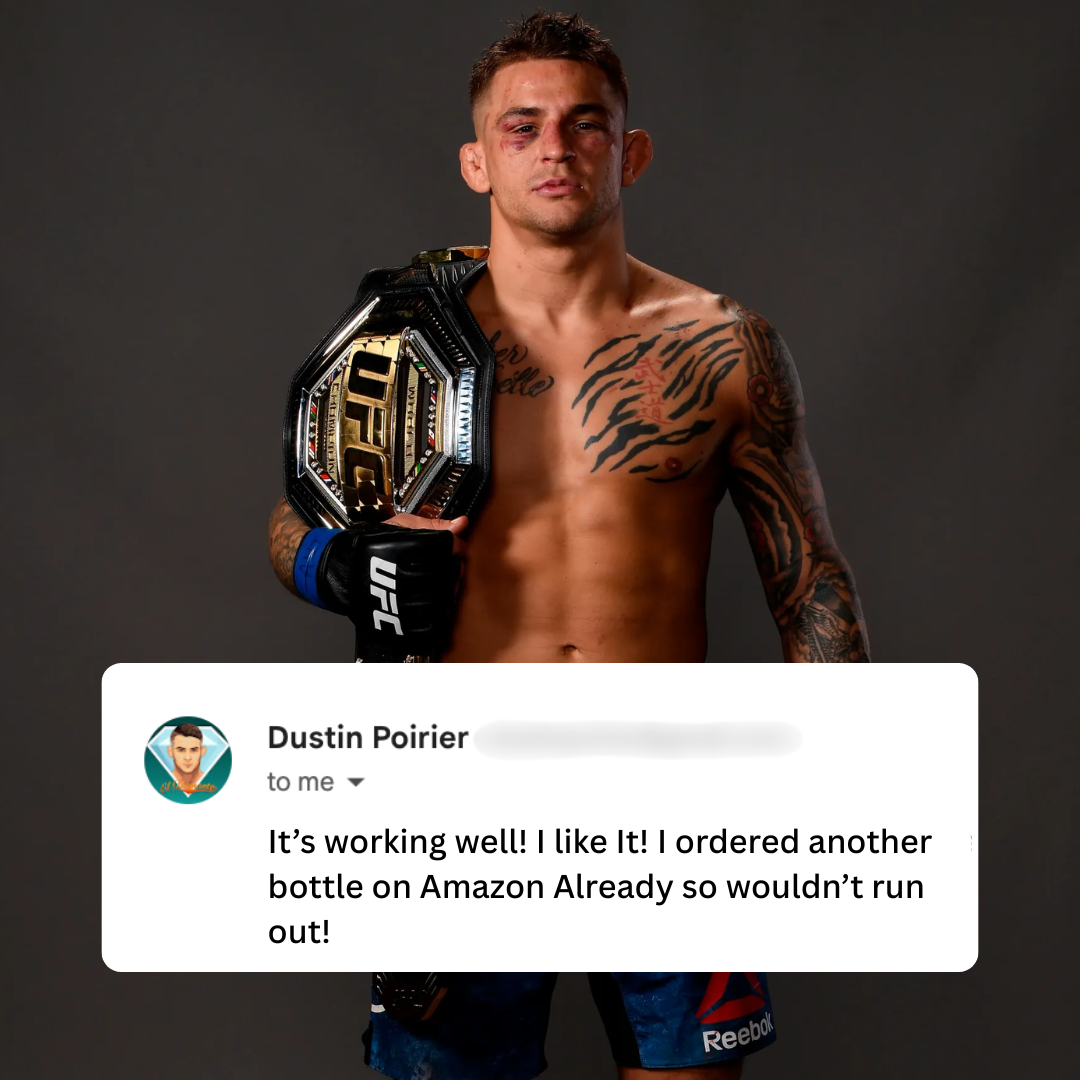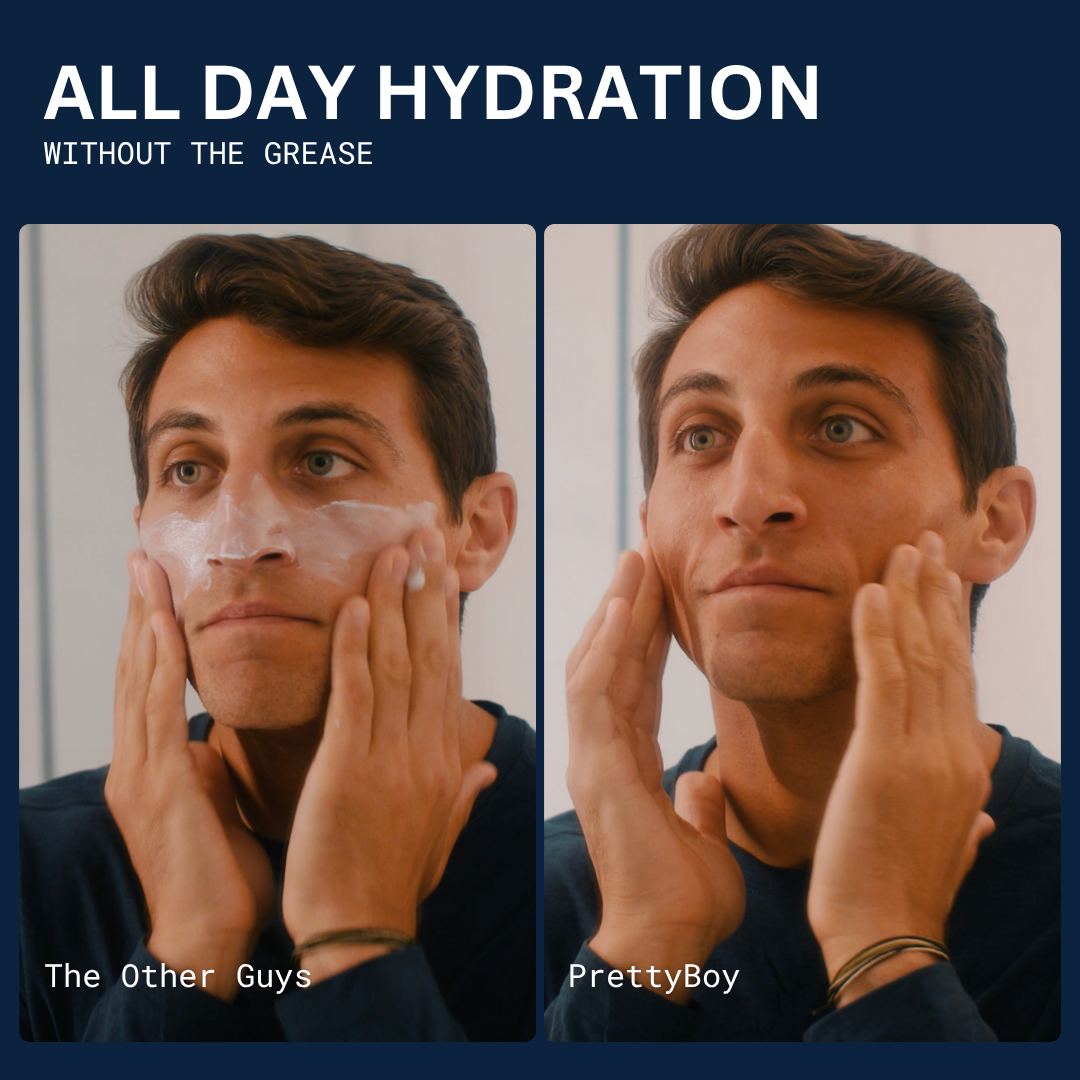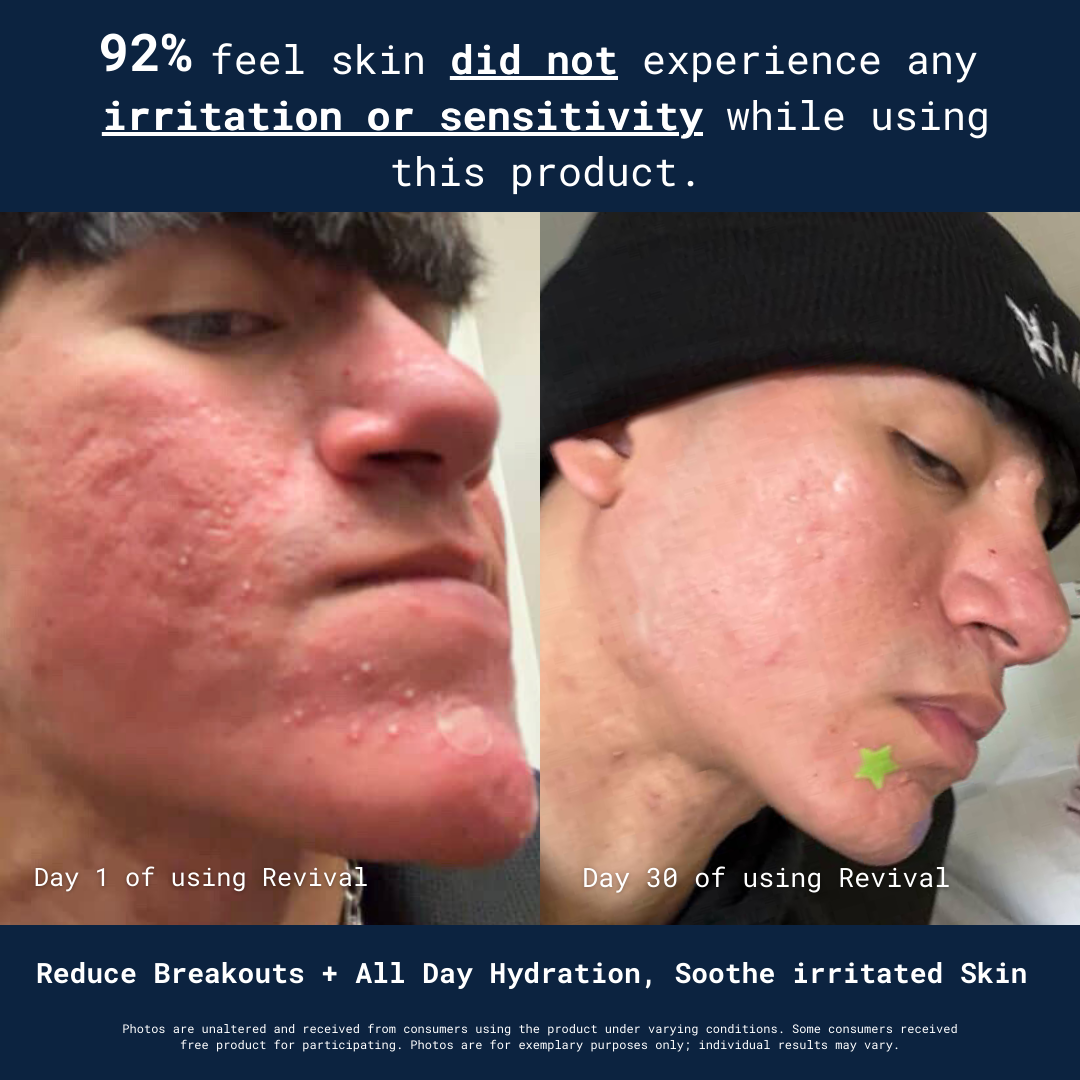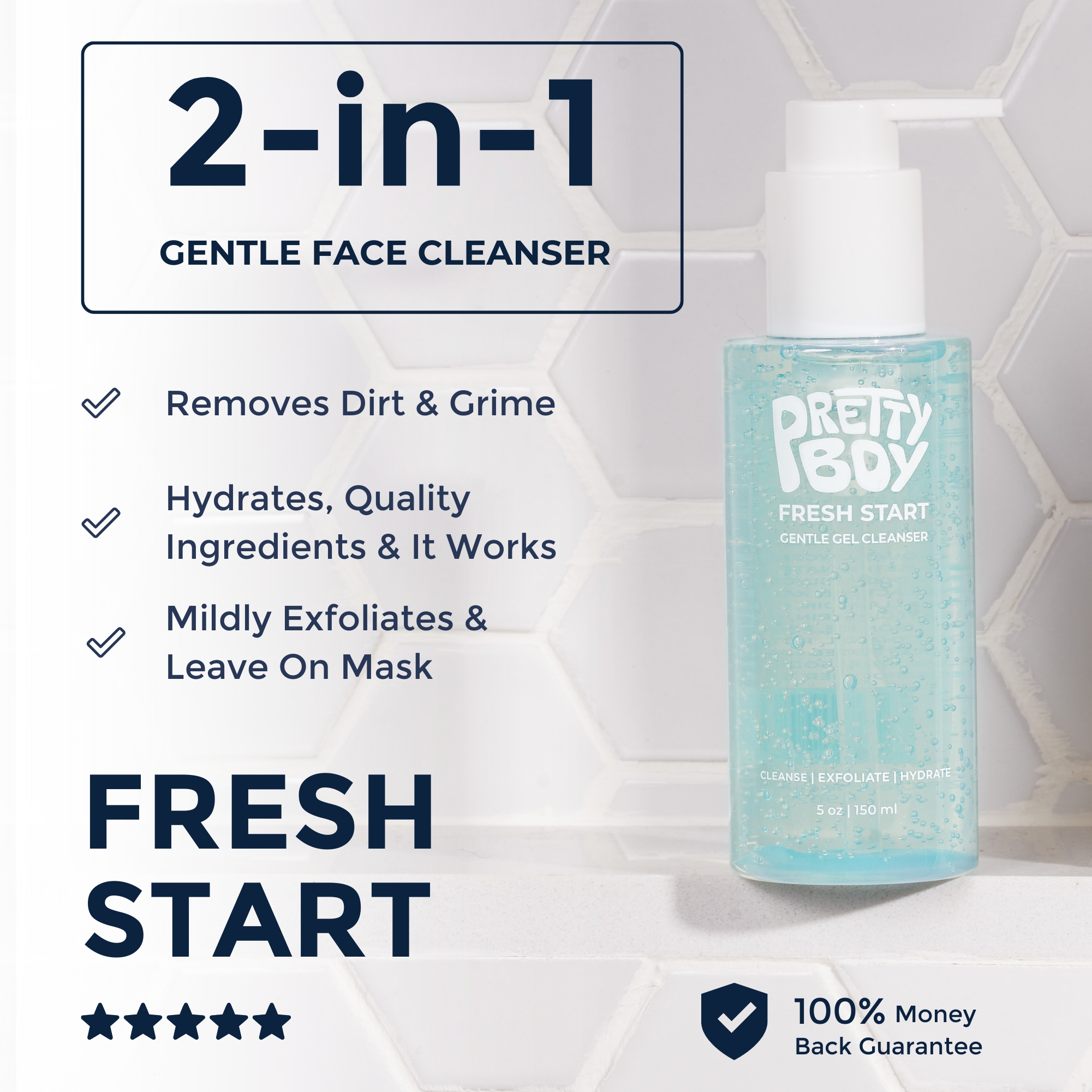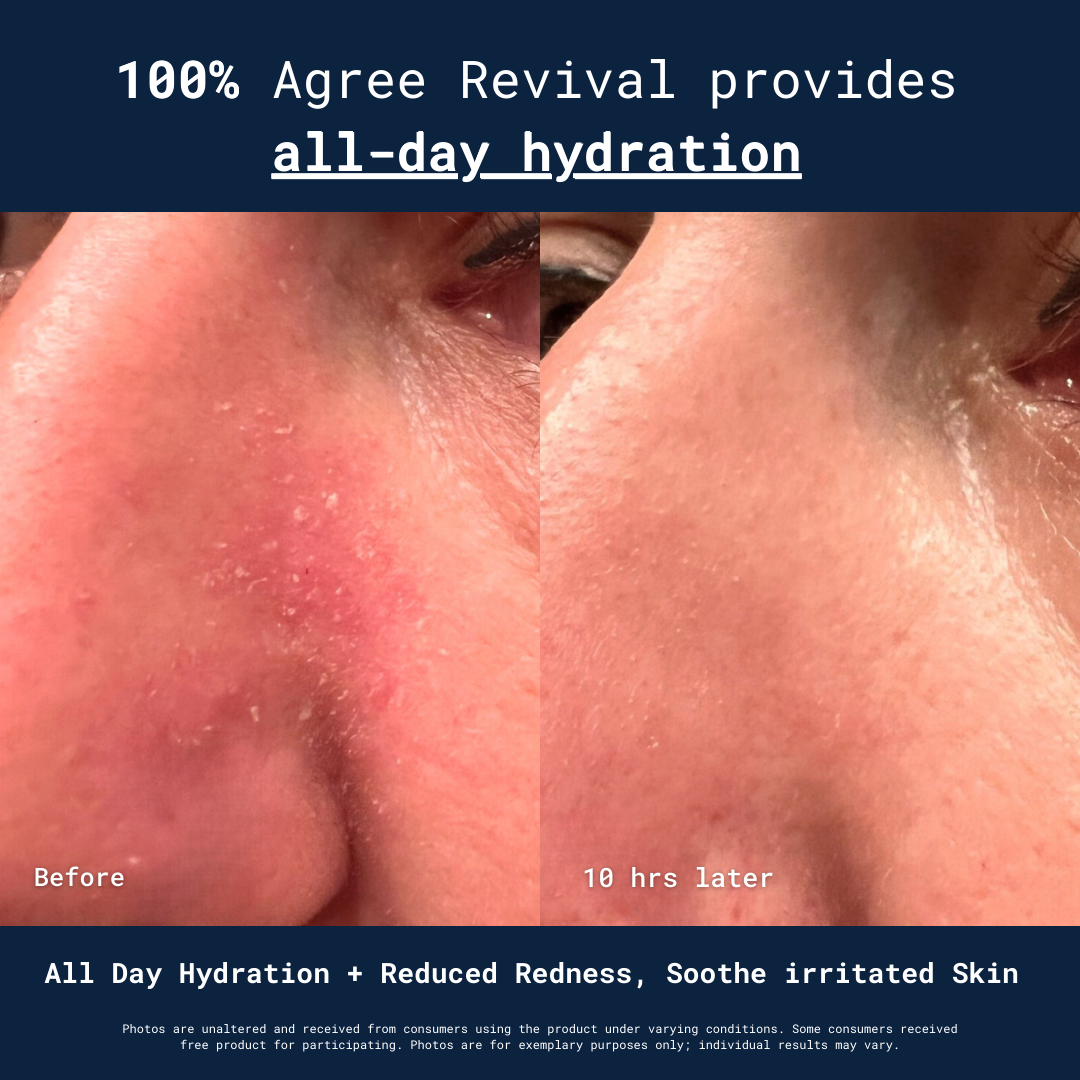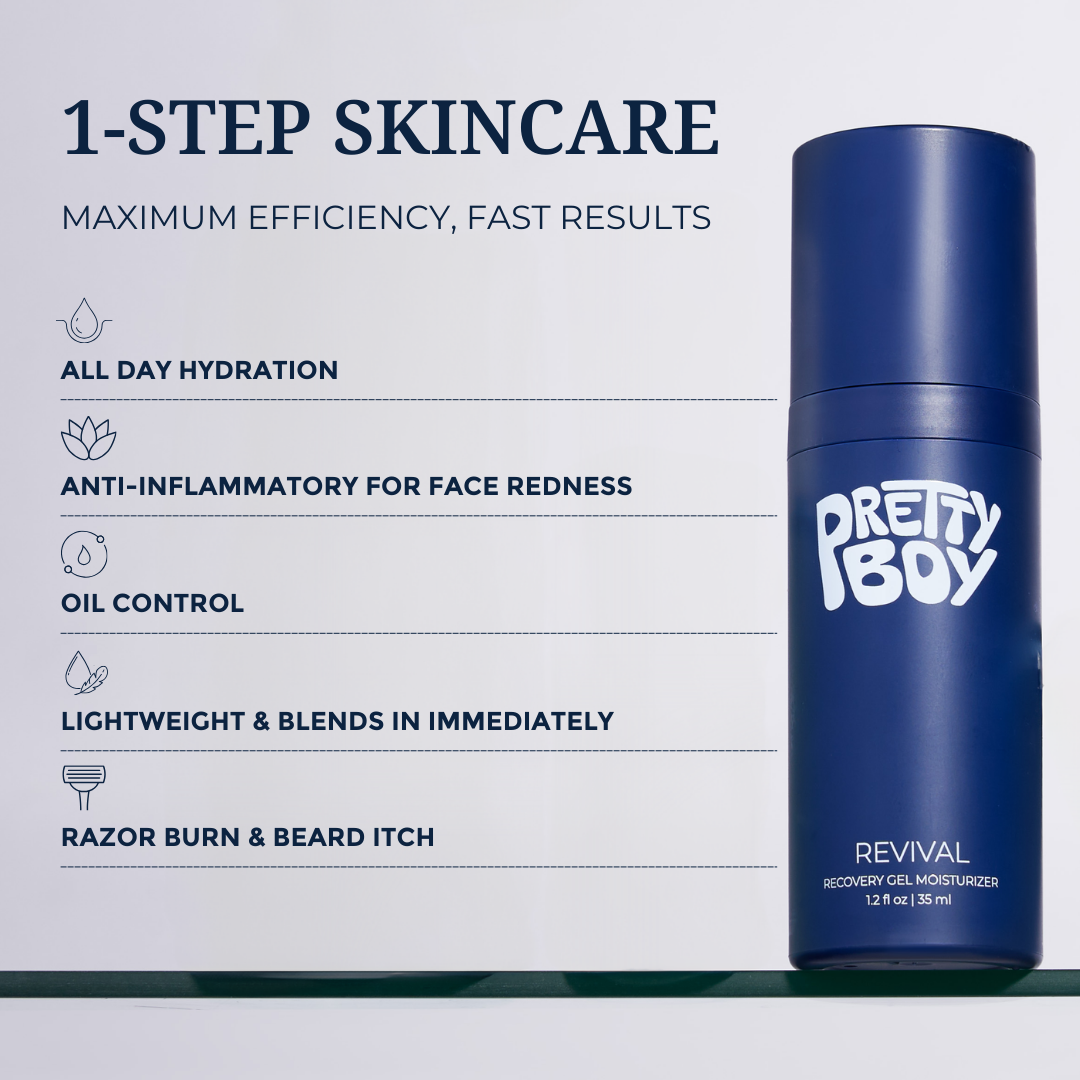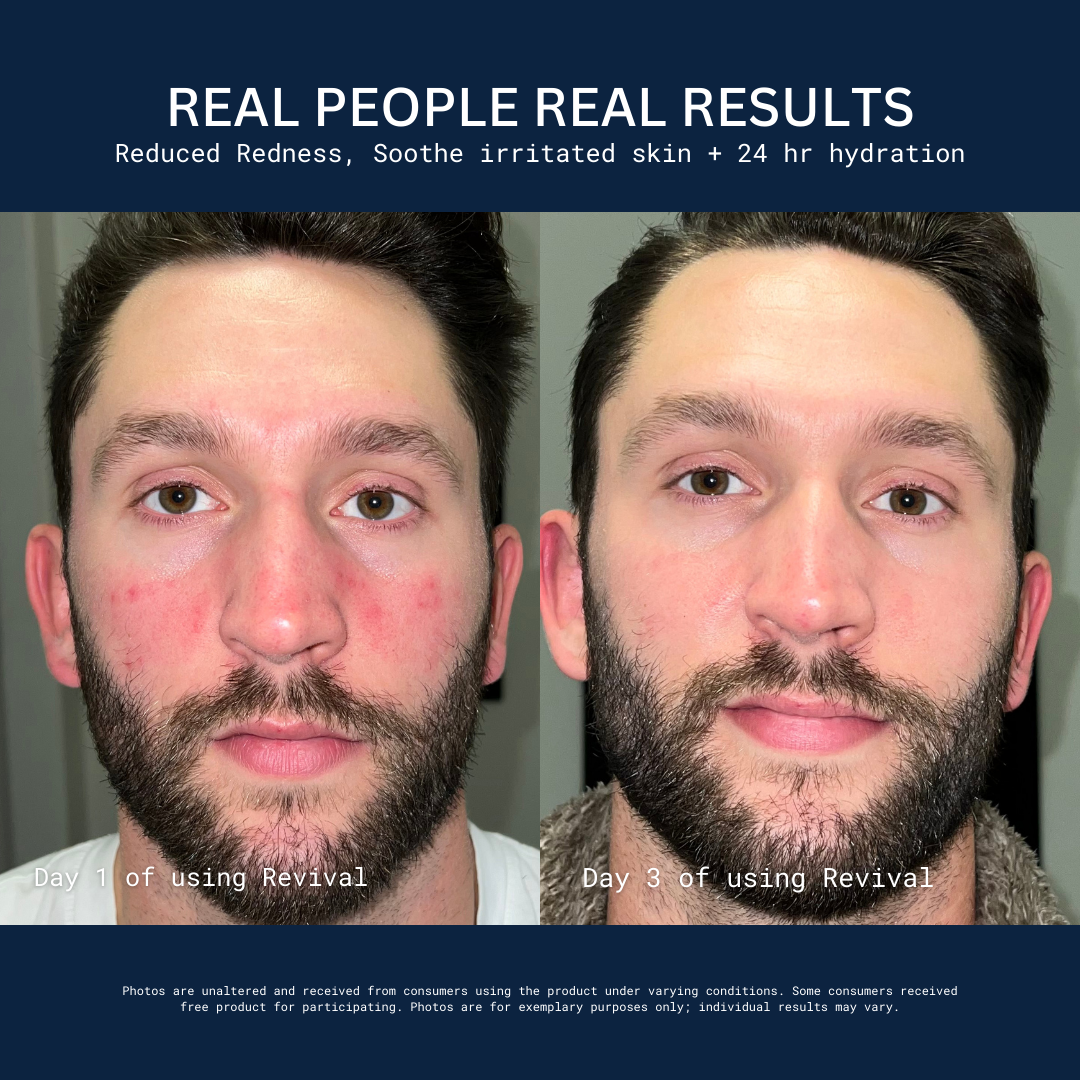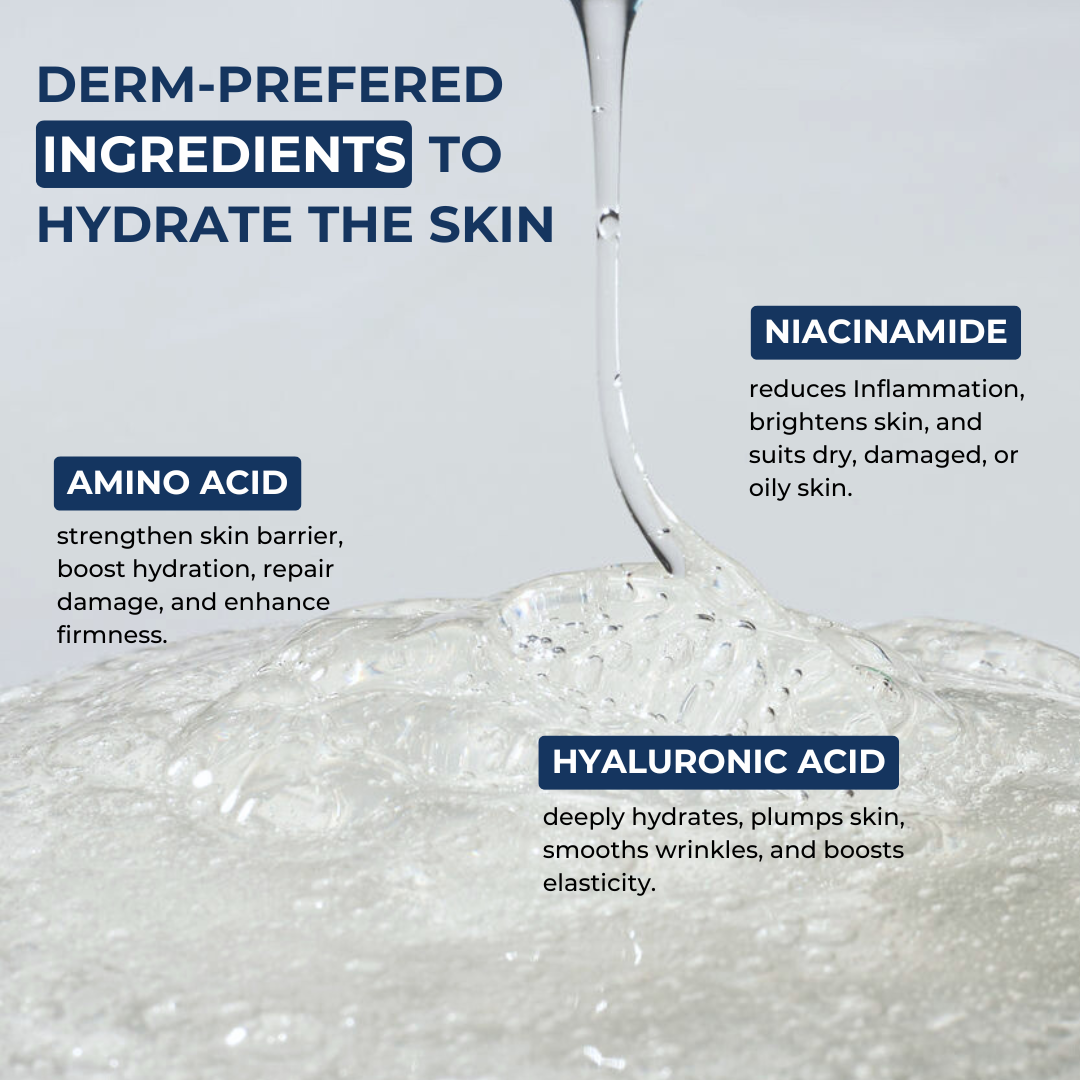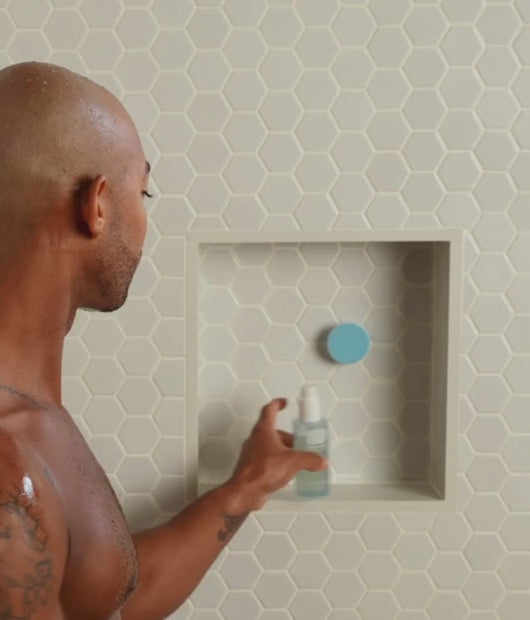Here’s a quick rundown of a rosacea skincare routine:
- Wash your face with a gentle cleanser
- Apply azelaic acid
- Apply a moisturizer with niacinamide
- Use fragrance-free sunscreen
- Cleanse and moisturize again before bed
Getting your skincare routine, opens in a new tab, opens in a new tab on point is essential for every guy, but it’s even more important when you’re trying to tame rosacea.
If you’re reading this, chances are your dermatologist has prescribed topical treatments to handle symptoms like inflammation, dryness, redness, and itchiness. But if you’re using the wrong cleanser, moisturizer, opens in a new tab, opens in a new tab, or sunscreen, you might be sabotaging your skin.
Don’t take our word for it though. The American Academy of Dermatology Association (AAD) , opens in a new tab, opens in a new tab points out that a rosacea-friendly skincare routine can reduce irritation, prevent flare-ups, and improve the results you’re already getting from prescription treatments.
In this article, we’ll walk you through the best skincare regimen for rosacea.
Here are the skincare products you’ll need:
- A gentle, fragrance-free face cleanser
- Azelaic acid (over-the-counter or prescription)
- A moisturizer with niacinamide and ceramides , opens in a new tab
- Fragrance-free sunscreen (SPF 30+)
The Best Skincare Regimen for Rosacea
Your rosacea skincare routine should accomplish 4 things:
- Rebalance your skin’s moisture levels
- Remove dirt and excess oil (without irritating your face)
- Reduce redness and blotchiness
- Protect your skin from sun damage
If you stick to these steps below, you should see a noticeable difference.
1. Wash Your Face with a Gentle Cleanser
Removing dirt, oil, and bacteria keeps rosacea symptoms under control. But using a harsh cleanser creates more problems than it solves. Here are some dermatologist-approved tips for washing your face with rosacea:
- Choose a mild, fragrance-free, cleanser without sodium lauryl sulfate.
- Use lukewarm water (hot water can trigger redness and dry out your skin).
- Gently apply the cleanser with your fingertips—don’t use a washcloth, sponge, or loofah.
- Rinse and pat dry with a clean, cotton towel.
2. Apply Azelaic Acid
Azelaic acid has been shown to calm inflammation and reduce redness, opens in a new tab thanks to its antibacterial properties. This review found, opens in a new tab, opens in a new tab that rosacea patients significantly reduced their symptoms after 15 weeks of using an azelaic acid gel with a 15% concentration.
Azelaic acid should be applied to clean, dry skin (before moisturizer or sunscreen, opens in a new tab, opens in a new tab). You can use it morning and night, but you may want to start with just a few applications a week to let your skin build up a tolerance.
3. Apply a Lightweight Moisturizer with Niacinamide
Moisturizing daily, opens in a new tab can reduce dryness, peeling, and roughness from rosacea in as little as 15 days, according to the AAD. Rosacea-prone skin tends to have impaired barrier function, and moisturizing replenishes the skin's hydration, preventing excessive dryness, opens in a new tab, opens in a new tab, irritation, and redness.
The key, however, is choosing the best moisturizer for rosacea. Here’s what you need:
- Niacinamide, opens in a new tab: This active form of vitamin B3 is shown, opens in a new tab to improve skin barrier function in rosacea patients. It also has a soothing effect that can reduce redness after 2-4 weeks of consistent use.
- Ceramides: These protect your skin from UV damage and other irritants. A 2022 study , opens in a new tab found that ceramides reduce the symptoms of rosacea by increasing the skin’s moisture levels and supporting its lipid barrier.
- Hyaluronic Acid: This natural substance enhances your lipid barrier and hydrates your skin from the inside out. One study found , opens in a new tab that hyaluronic acid improved rosacea symptoms in 79% of patients after eight weeks of consistent use.
Spare yourself the guesswork of finding the right moisturizer and snag a bottle of Revival , opens in a new tab: Rosacea’s worst enemy. We collabed with dermatologists to create the exact right ratios of niacinamide, hyaluronic acid , opens in a new tab, opens in a new tab, and ceramides. Revival delivers results for all skin types, earning us a spot on GQ’s list of best moisturizers, opens in a new tab, opens in a new tab.
4. Apply Fragrance-Free Sunscreen
Sun protection is one of the most important first steps to treat rosacea, according to the Journal of the American Academy of Dermatology , opens in a new tab, opens in a new tab. UV rays increase inflammation, intensify redness, and trigger flare-ups.
That said, finding a rosacea-friendly sunscreen , opens in a new tab, opens in a new tab that doesn’t irritate your skin can be tricky. Here’s what dermatologists recommend that you look for in a sunscreen formula:
- Zinc oxide, titanium dioxide, or both
- Silicone (AKA cyclomethicone, dimethicone, orcyclomethicone)
- Fragrance-free (note that “unscented” isn’t the same as fragrance-free)
- Broad-spectrum protection
- SPF 30 or higher
5. Cleanse and Moisturize Again Before Bed
Your face accumulates bacteria, sweat, sebum, and irritants throughout the day—all of which need to be washed away before you hit the sack. Just repeat the same face cleansing steps we covered above and you’ll be good. Next, apply moisturizer to your clean, dry face.
Pro tip: Make sure your pillowcase isn’t dirty (you should be washing it once a week, and probably more if you have sensitive skin).
Bonus Skin Care Tips for Rosacea
Knowing what to include in your rosacea skincare routine is important—but it’s equally important to know what not to include.
1. Avoid Harsh Ingredients
Here are some ingredients you should steer clear of if you have rosacea, according to the AAD:
- Alcohol , opens in a new tab, opens in a new tab
- Camphor
- Artificial fragrance
- Glycolic acid
- Lactic acid
- Menthol
- Sodium lauryl sulfate (the stuff that makes soap foam up)
- Urea
2. Don’t Use Physical Exfoliants
Exfoliating , opens in a new tab is important to get rid of dead skin cells. But abrasive exfoliants can create micro tears in the skin, exacerbating redness, irritation, and other rosacea symptoms.
Instead, consider using chemical exfoliants with ingredients like alpha hydroxy acids (AHAs) or beta hydroxy acids (BHAs). These help to gently dissolve dead skin cells, promoting smoother skin without the abrasive action of physical exfoliants.
3. Avoid Your Triggers
Rosacea triggers can vary from person to person, but here are some that are notorious for causing rosacea flare-ups, according to the AAD , opens in a new tab, opens in a new tab:
- Alcohol
- Spicy food
- Hot drinks
- Sun exposure
- Hot or cold temperatures
- Wind
- Intense exercise , opens in a new tab, opens in a new tab
- Stress
Revival Is Rosacea’s Worst Enemy
Rosacea might be a complicated skin condition, but that doesn’t mean your skincare routine needs to be complicated too. Revival , opens in a new tab combines all the ingredients you need to combat dry, red, itchy skin into one bottle. No wonder board-certified dermatologists preferred our formula over big-name brands like Cetaphil and CeraVe.
In as little as 10 hours, one pump of Revival , opens in a new tab can even out your complexion so you can crush life with confidence. Snag a bottle and see why thousands of dudes have ditched the drugstore and hopped on the PrettyBoy bandwagon.








